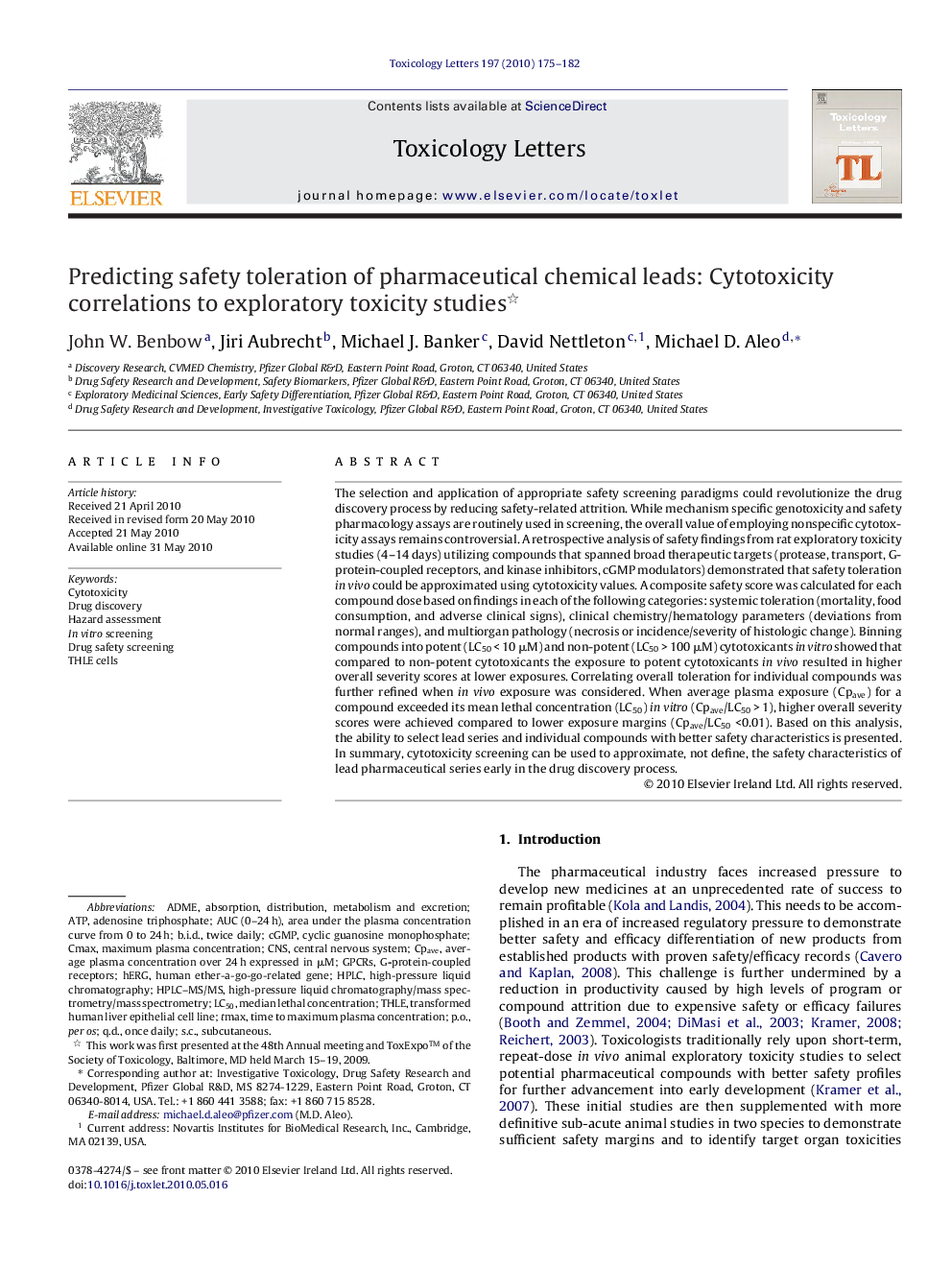| Article ID | Journal | Published Year | Pages | File Type |
|---|---|---|---|---|
| 2600713 | Toxicology Letters | 2010 | 8 Pages |
The selection and application of appropriate safety screening paradigms could revolutionize the drug discovery process by reducing safety-related attrition. While mechanism specific genotoxicity and safety pharmacology assays are routinely used in screening, the overall value of employing nonspecific cytotoxicity assays remains controversial. A retrospective analysis of safety findings from rat exploratory toxicity studies (4–14 days) utilizing compounds that spanned broad therapeutic targets (protease, transport, G-protein-coupled receptors, and kinase inhibitors, cGMP modulators) demonstrated that safety toleration in vivo could be approximated using cytotoxicity values. A composite safety score was calculated for each compound dose based on findings in each of the following categories: systemic toleration (mortality, food consumption, and adverse clinical signs), clinical chemistry/hematology parameters (deviations from normal ranges), and multiorgan pathology (necrosis or incidence/severity of histologic change). Binning compounds into potent (LC50 < 10 μM) and non-potent (LC50 > 100 μM) cytotoxicants in vitro showed that compared to non-potent cytotoxicants the exposure to potent cytotoxicants in vivo resulted in higher overall severity scores at lower exposures. Correlating overall toleration for individual compounds was further refined when in vivo exposure was considered. When average plasma exposure (Cpave) for a compound exceeded its mean lethal concentration (LC50) in vitro (Cpave/LC50 > 1), higher overall severity scores were achieved compared to lower exposure margins (Cpave/LC50 <0.01). Based on this analysis, the ability to select lead series and individual compounds with better safety characteristics is presented. In summary, cytotoxicity screening can be used to approximate, not define, the safety characteristics of lead pharmaceutical series early in the drug discovery process.
